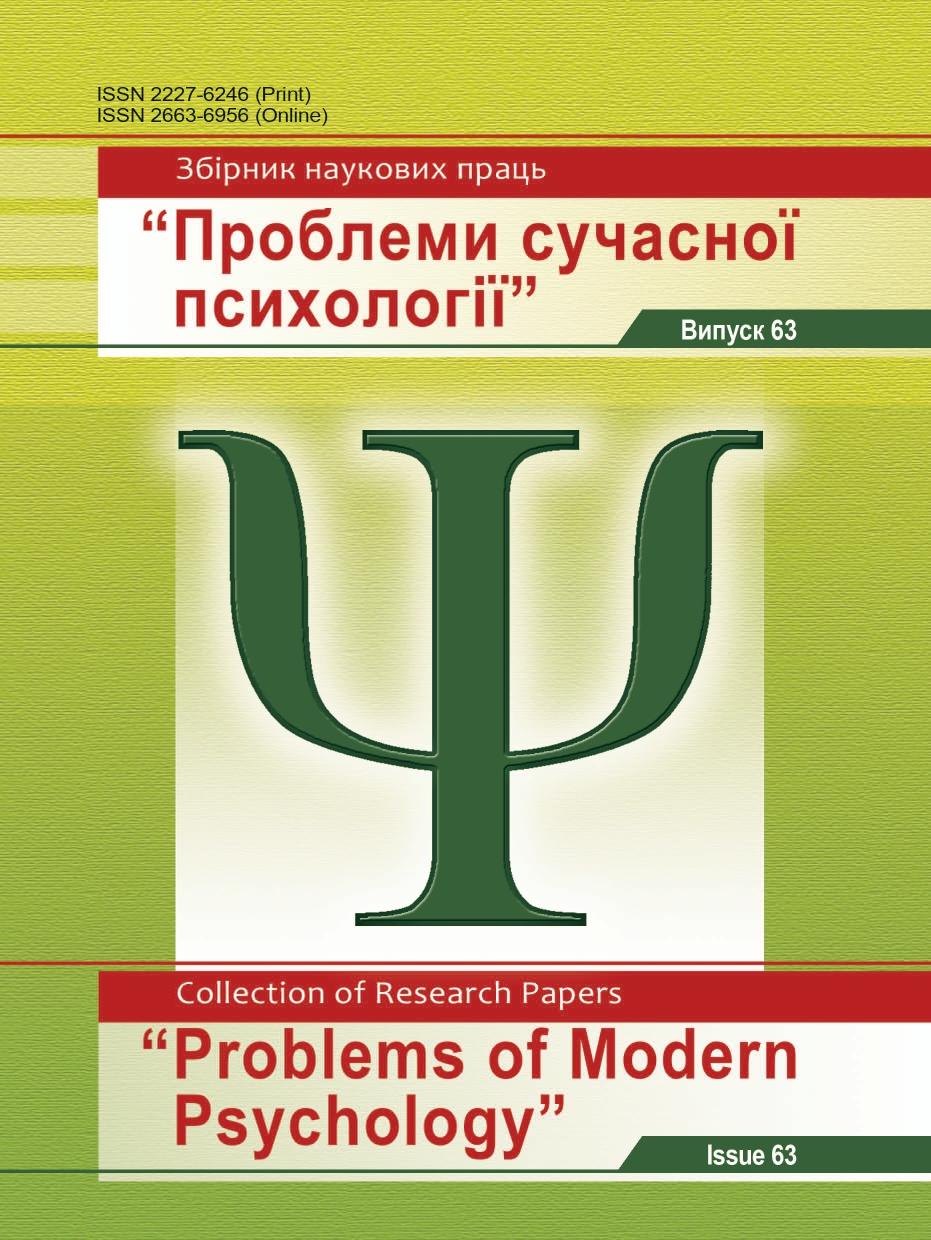Шкала «Умотивованість»: емпірична характеристика феномену і презентація методики
DOI:
https://doi.org/10.32626/2227-6246.2024-63.263-289Ключові слова:
умотивованість, мотиваційний стан, шкала Умотивованості, статичність, динамічність, типи умотивованості, натхненняАнотація
Мета дослідження полягає у встановленні емпіричних дескрипторів стану умотивованості.
Методи. Дослідження реалізовано за моделлю Нельсона, яка передбачає змогу визначення сутності проблеми за наявних умов. В емпіричному дослідженні було застосовано такі методики, як опитувальник структури мотивації, шкала екзистенційної здійсненності Ленге і Орглера, опитувальник мотиваційних цінностей Шварца, методика Психологічний капітал Лутанса, опитувальник психологічного благополуччя Ріфф, опитувальник життєвих завдань особистості (лабораторія соціальної психології особистості проф. Титаренко), опитувальник резервної мотивації Штепа, опитувальник психологічної ресурсності Штепа, методика осмисленості життя (адаптаційна версія опитувальника Крамбо і Махоліка), опитувальник життєстійкості Мадді. Застосовано такі методи математико- статистичного аналізу: багатофакторнй, кластерний, кореляційний, порівняльний, класифікаційний аналіз.
Результати дослідження полягають у з’ясуванні розуміння співвідношення власних сил і труднощів, виконання завдання докладанням саме власних зусиль, зацікавленість процесом виконання завдання, бажання виконувати завдання, натхненність власним досвідом успіху, уміння робити аналітичні висновки з власного досвіду невдач, опірність до стресів під час виконання завдання, ініціативність у постановці завдання, прагнення отримувати і надавати інформативний зворотній зв’язок під час виконання і завершення завдання, готовність набувати нових знань і умінь для виконання завдання, чуття покликання за постановки та виконання завдання. Cronbach alpha для тверджень шкали Умотивованість є у межах 0,91– 0,92. Значення інтеркореляцій показників умотивованості становить 0,30–0,78 (p < ,001). Класифікаційний аналіз показав, що низький, середній, високий рівні умотивованості коректно визначено на 90%, 100%, 100% відповідно. Структура умотивованості є двофакторною, кумулятивно-багатофакторний аналіз пояснив 59% дисперсії даних у групі. Вищий рівень умотивованості характеризується її процесуальними, динамічними показниками. Метод k-середніх показав коректність виокремлення двох типів умотивованості – низький і високий; тип умотивованості визначається її динамічними показниками.
Висновки: умотивованість нами схарактеризовано як динамічний мотиваційний стан екзистенційного дискурсу, що актуалізується відносно певної життєвої задачі, виявляється у здатності особистості співвіднести в діалогічній взаємодії власні ресурси з викликами життєвих умов і проживається нею, як натхнення.
##submission.downloads##
Опубліковано
Як цитувати
Номер
Розділ
Ліцензія
Авторське право (c) 2024 Штепа Олена

Ця робота ліцензується відповідно до Creative Commons Attribution-NonCommercial 4.0 International License.
Редакція має повне право публікувати у Збірнику оригінальні наукові статті як результати теоретичних і експериментальних досліджень, які не знаходяться на розгляді для опублікування в інших виданнях. Автор передає редколегії Збірника права на розповсюдження електронної версії статті, а також електронної версії англомовного перекладу статті (для статей українською та російською мовою) через будь-які електронні засоби (розміщення на офіційному web-сайті Збірника, в електронних базах даних, репозитаріях та ін).
Автор публікації зберігає за собою право без узгодження з редколегією та засновниками використовувати матеріали статті: а) частково чи повністю в освітніх цілях; б) для написання власних дисертацій; в) для підготовки абстрактів, доповідей конференцій та презентацій.
Автор публікації має право розміщувати електронні копії статті (у тому числі кінцеву електронну версію, завантажену з офіційного web-сайту Збірника) на:
- персональних web-ресурсах усіх Авторів (web-сайти, web-сторінки, блоги тощо);
- web-ресурсах установ, де працюють Автори (включно з електронними інституційними репозитаріями);
- некомерційних web-ресурсах відкритого доступу (наприклад, arXiv.org).
Але в усіх випадках обов’язковою є наявність бібліографічного посилання на статтю або гіперпосилання на її електронну копію, що містяться на офіційному сайті Збірника.







